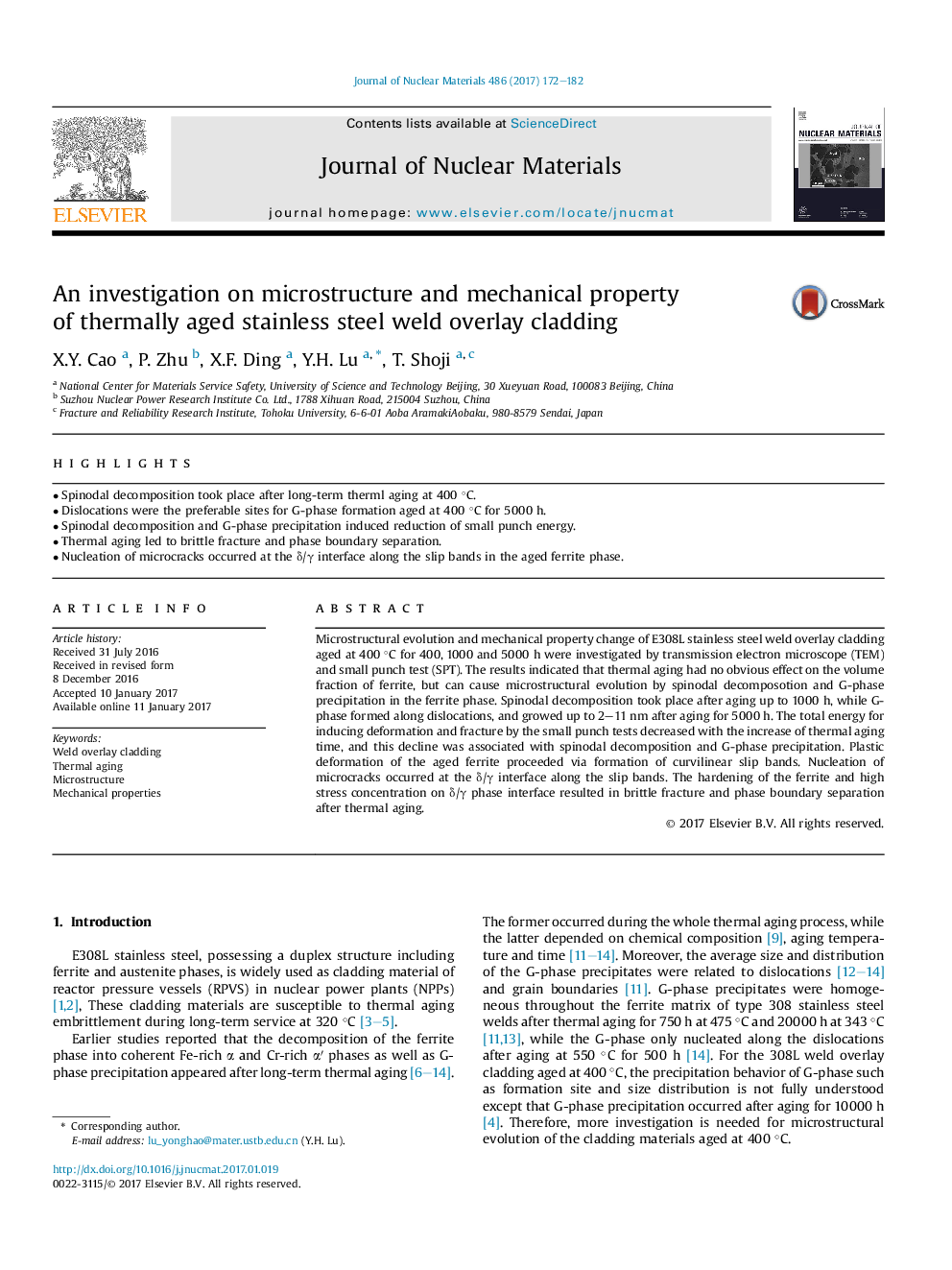| Article ID | Journal | Published Year | Pages | File Type |
|---|---|---|---|---|
| 5454215 | Journal of Nuclear Materials | 2017 | 11 Pages |
Abstract
Microstructural evolution and mechanical property change of E308L stainless steel weld overlay cladding aged at 400 °C for 400, 1000 and 5000 h were investigated by transmission electron microscope (TEM) and small punch test (SPT). The results indicated that thermal aging had no obvious effect on the volume fraction of ferrite, but can cause microstructural evolution by spinodal decomposotion and G-phase precipitation in the ferrite phase. Spinodal decomposition took place after aging up to 1000 h, while G-phase formed along dislocations, and growed up to 2-11 nm after aging for 5000 h. The total energy for inducing deformation and fracture by the small punch tests decreased with the increase of thermal aging time, and this decline was associated with spinodal decomposition and G-phase precipitation. Plastic deformation of the aged ferrite proceeded via formation of curvilinear slip bands. Nucleation of microcracks occurred at the δ/γ interface along the slip bands. The hardening of the ferrite and high stress concentration on δ/γ phase interface resulted in brittle fracture and phase boundary separation after thermal aging.
Related Topics
Physical Sciences and Engineering
Energy
Nuclear Energy and Engineering
Authors
X.Y. Cao, P. Zhu, X.F. Ding, Y.H. Lu, T. Shoji,
